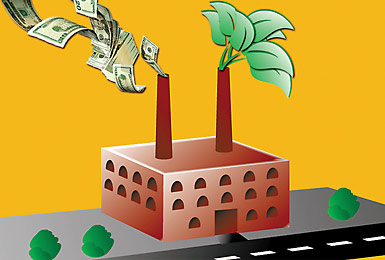The Area Development Frontline series offers insight into the innovative strategy being taken by businesses that are succeeding, intelligence on locations that are deploying winning policy to attract investment and talent, and reports on the industry trends that are affecting and shaping the global business climate now and into the future.
A manufacturing facility will not produce much of anything without reliable energy. But can a facility serve as its own energy source? Evadale, Texas-based MeadWestvaco Corporation, a global packaging company, says it can. With Zera Energy of Woodville, Texas, MeadWestvaco is building a $1.5 million commercial biogas demonstration plant near its Evadale manufacturing facility. If the plant performs as planned, it will transform MeadWestvaco's waste materials into biogas to power company operations. The facility, which will be owned by Zera, can convert 10,000 pounds of solids, or 25,000 gallons of feed material, per day at full operation.
VOW Resources, an organic waste management and resource recovery company in Terre Haute, Indiana, will operate the plant. VOW has run such facilities in the United Kingdom, Europe, Asia, and Australia, and is pursuing 10 similar operations in the United States, says Dennis Evers, VOW's chief technical officer.
Opportunities of Green Technology
Unlike its other operations, VOW will operate MeadWestvaco's plant from a freestanding facility. It is usually contained in an existing factory.
"The parties in the joint venture are looking to take in a whole load of different wastes, so they wanted a plant that could test those sorts of things and quantify the design for it," Evers says.
MeadWestvaco can earn value back from the facility.
"This is an exciting opportunity to apply advancements in green technology to enhance our operations and generate renewable energy sources," says Jim Gresham, vice president of MeadWestvaco's Evadale operations. "We anticipate numerous benefits from this collaborative effort, including reducing consumption of water and natural gas, lowering our landfill requirements, and creating a valuable organic fertilizer."
An electric generator will burn biogas and methane produced in the plant and flare the excess methane. MeadWestvaco will sell the fertilizer byproduct to the local agriculture markets.
A Successful Method?
MeadWestvaco expects VOW to produce 200,000 to 400,000 cubic feet of biogas per day - and create 12 jobs if the effort succeeds. "The biogas demonstration plant will be used to confirm the biogas generation potential from paperboard waste material from the Evadale Mill, and to test a variety of other organic waste materials from other sources to further enhance biogas or methane production," says Penny Sullivan, public relations manager for MeadWestvaco.
The demonstration facility will not require special energy or utility needs, potentially adding to the value of the net energy generated. "Electricity will be purchased from the local Jasper-Newton Electric Co-op," Sullivan says. "Excess electric power generated as part of the demonstration plant operation will be sold back to Jasper-Newton Electric Co-op."
So, should CEOs consider adjacent facilities to convert waste into biofuels? Remember, the process may not always work, converted energy is only valuable if used or sold, and facilities are not cheap.
Manufacturers are probably better off if they don't attempt to build, own, and operate such facilities themselves. But some will seek to reap value from their waste. Whether MeadWestvaco has found a successful method for capitalizing should be known soon.




